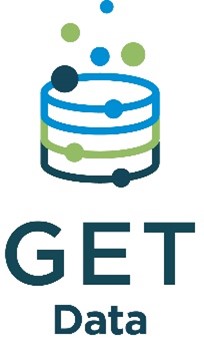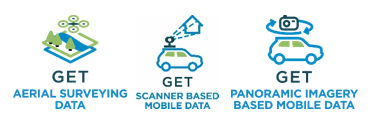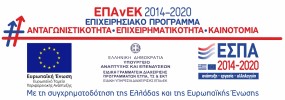R&D Project “MuseionTopos”
The project “MuseionTopos”, were GET participated, project code: Τ1ΕΔΚ-01571 under the framework “RESEARCH – CREATE – INNOVATE” of the Operational Programme “Competitiveness Entrepreneurship Innovation” (EPAnEK 2014-2020), Partnership Agreement 2014-2020, was successfully completed.
MuseionTopos was implemented by a collaborative group of four (4) partners: the Products and Systems Design Engineering department of the Aegean University, the Piraeus Bank Group Cultural Foundation, and 2 companies: DOTSOFT and GET.
The project ‘MuseionTopos’ seeked to contribute to the promotion of the culture of settlements and museums of the Aegean, which are characterized by an exceptional craft-industrial tradition and architectural heritage. The project aimed to connect PIOP museums with settlements and islands through interactive gaming systems that utilize mobile technologies and user movement detection and focuses on highlighting the architectural heritage and intangible craftmanship.
The project focused on the museums of PIOP on the islands of: Chios, Tinos and Lesvos, which are located respectively in the areas of: Mastic villages of Olympus, Pyrgos and Agia Paraskevi. The specific museums and the places that host them are characterized by special beauty and cultural value, and have to manage specific challenges, some in terms of the local community and the connection of museums with them, others in the wider competitiveness of a modern museum. The relevant settlements (and islands) of the Aegean have low traffic for most of the year, have been under severe pressure from the refugee (Lesvos & Chios) and economic (Tinos) crisis, while their residents and visitors are not always in interaction with museums. The connection of the museums with the settlements and the islands has significant benefits for the local community, tourism, education and sustainable cultural development.
The main objectives of the project were:
- Digitization and documentation of the architectural heritage of the settlements (the HERMeS methodology and system will be followed) and of important 3D exhibits of the museums.
- Connecting settlements to museums through tours to visitors from mobile applications that include gaming and storytelling.
- Promotion of intangible tradition of craftmanship through simulation of digital (reconstruction) with interactive installations for the detection of user movements.
- Ensuring the sustainability of the results through a design approach, extensive pilot operation, data in open access repositories, open digital courses, publications, sustainable exploitation plan.
During the implementation of this project, GET was responsible, inter alia, for Work Package (WP) 2 entitled “DOCUMENTATION OF ARCHITECTURAL HERITAGE OF THE BUILDING OF THE SETTLEMENTS (HERMES), MAPPING, ROUTES “, which aimed at the registration and documentation of the architectural heritage and the development of a dedicated database for the selected buildings. The WP included the following actions:
- Development of a Registration Application for the Historic Buildings of all Settlements. It included the development of an application with an interface in the HERMeS system for the architectural and historical documentation of the three settlements (using tablet).
- Καταγραφή HERMeS ιστορικών κτηρίων οικισμών. Η ψηφιοποίηση έγινε με φωτογράφηση των κτηρίων και λεπτομερειών τους καθώς και με τεκμηρίωση των αρχιτεκτονικών στοιχείων κατασκευής τους, και απαιτήθηκε επιτόπια αυτοψία. Προτεραιότητα δόθηκε στα κτήρια που είναι εξαιρετικά παραδείγματα (μνημεία, διατηρητέα, ιστορικής αξίας) καθώς και σε όσα αντιμετωπίζουν προβλήματα κατάρρευσης και εγκατάλειψης προκειμένου να επιτευχθεί η προστασία της φυσιογνωμίας του οικισμού και η ευαισθητοποίηση της κοινωνίας (σύνδεση με τον τόπο).
- HERMeS documentation of historic settlement buildings. The documentation was done by photographing the buildings and their details, as well as by documenting their architectural elements, and an on-site autopsy was required. Priority was given to buildings that are exceptional examples (monuments, preserved, of historical value), as well as those that face problems of collapse and abandonment in order to achieve the protection of the physiognomy of the settlement and the awareness of society (connection to the place).
- Mapping of settlements and landscape between settlements-museum. The process of digitizing the network of routes within the settlement of interest was carried out using the GoPro Fusion camera which records, through the two eccentric cameras it has, the surroundings in the form of a 360-degree image. The shooting was done with a resolution of up to 18 MP while the possibilities of automatic or manual adjustment of the shooting characteristics are provided. A total of 28,825 images were taken documenting the settlements and the routes and connections to the museums. For the settlement of Pyrgos in Tinos, a 3D capture of selected buildings of the settlement was made.
- Development of the Geographical database. The database is the infrastructure on which the portable gaming applications, connecting the museum with its settlement, operate, and it includes buildings, maps, routes, points of interest and multimedia (photos, sounds, videos). The same database was used for the development of an open web platform for presenting the documentation results in order to raise awareness for the local community (residents, small and medium-sized cultural organizations, NGOs, Public Bodies, Local Government, etc.) and provide the opportunity to the local community to participate in its enrichment, with easy and friendly way.
- Development of semantic connections among buildings and museum
The documentation of the settlement, its remarkable buildings and its main paths, are an integral part of the preservation of the cultural heritage of the island while at the same time provided the required information to the project for shaping the structured landscape of the settlement associated with the intangible cultural heritage and the community olive mill in Lesvos, as well as the cultivation of mastic in Chios, but also the marble industry in Tinos. The digitization provided high-resolution data (photos, videos, location, 3D capture, stories, testimonials) to both WP deliverables D3.3. “Production of audiovisual content and tangible objects” and D3.4. “User task analysis, interaction design and interfaces”, as well as the deliverable D.2.5. related to the search for semantic connections between the tangible and intangible element of the settlement, and how this will be captured / represented / communicated through the digital culture and the gaming – educational applications of the Project.
GET besides WP2, was responsible for deliveries D3.3. Production of audiovisual content and tangible objects, D3.5. Completion, standardization and laboratory tests with users, D5.4. Pilot operation: technical support and bug fixes, as well as for D6.4. Sustainable Exploitation Plan.


TECHNOLOGY
- QGIS 3.16
- Mapillary
- Mapillary uploader
- GoPro Fusion Studio 1.3
- GoPro VR Player 3.0
- GoPro Quik
- OsmAnd
- FSPViewer
- GET SDI Portal
- Customized WordPress
- CensiumJS
- ODK Server





